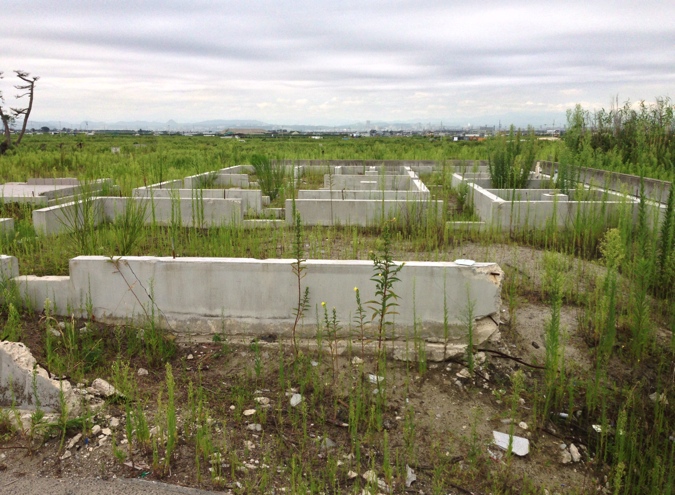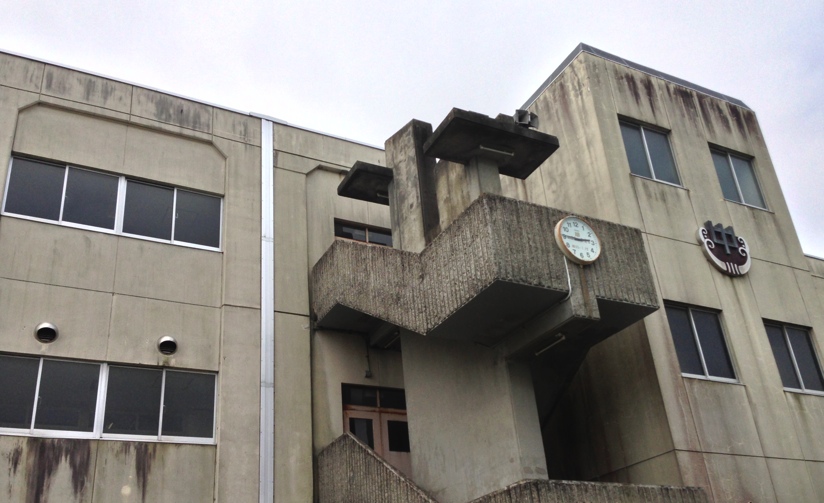|
My selection of the Presidential theme of “Science and Society” seemed obvious to me at the time because of the basic importance and interdependence of these two entities. A recent visit to the disaster zone in Sendai, Japan, coincident to my participation in the 11th annual Japanese Society of Medical Oncology (JSMO) meeting in late August 2013, brought this into sharp focus again and highlights how we, caring for patients and families suffering from cancer, are part of a broad and rich matrix.
As everyone surely knows, the Tohoku earthquake, magnitude 9.0 (approximately) struck this area of Japan on March 11, 2011. The epicenter was offshore in the Pacific Ocean, but of course it was not peaceful for long. A series of tsunamis, some possibly as high as 5 to 10 meters, rolled over the nearby beaches and up the rivers and inlets at speeds estimated as high as 80 kilometers per hour. All of this would have been in easy sight of my hotel room on the 26th floor of a crisp new high-rise building a few 100 meters from the Sendai Train Station in the central business district. In the process, more than 15,000 lost their lives, more than 100,000 buildings were destroyed, and more than 250,000 badly damaged.
There have been awful earthquakes, tsunamis, hurricanes, superstorms, typhoons, and myriad other natural and man-made disasters (see this about oncology in Syria), and there always will be. But it is the human (societal) response that impresses more than the calamity.
Disaster zone tour
Less than 30 months after the tsunami, in late August, the Japanese Society of Medical Oncology held its 11th annual meeting in Sendai. As an invited speaker, I came to meet with JSMO’s talented and dedicated leadership and to present the scientific work I lead with Andrew Dannenberg from Weill Cornell Medical College (and too many others to list here) on obesity, still relatively less common in Japan, and breast cancer. A rare opportunity during this meeting was the chance to take a “disaster zone tour.” This is not an enticing name for an extracurricular activity, but along with ASCO’s Immediate Past President, Sandy Swain, and a mini-van full of other physician-investigators and our guides, we departed our hotel on a humid and gray morning to see the destruction as well as the recovery.
We didn’t have to go far. Within about 10 minutes, evidence of the wave and flood were pointed out to us. A few buildings were clad in perfect netting, hiding extensive ongoing repairs inside. Then we crossed rice fields, now ruined by the flood of salt water. Agricultural experts are testing other crops, such as cotton, thought to be resistant to the deposited sodium-chloride. Everywhere there were sunflowers growing along the edges of roads.
 |
 |
Community and collaboration
This visit to a place of so much devastation was oddly uplifting. Our hosts were proud of their rapid recovery and of their historic city’s resilience. The scope and ambition of the rebuilding are inspiring. Berms and barriers are growing to elevate entire districts and protect them from the next “once in a thousand years” wave, new crops are possibly going to replace the traditional ones that may not thrive in the recomposed soil, new systems are in place to monitor for and warn of natural disasters, and a sense of community, collaboration, and a shared sense of accomplishment were evident in abundance.
To this point, I have not mentioned the obvious: the flooding of the nuclear power station about 80 km away and the subsequent radiation leak. The sunflowers along the roads were planted in the belief that they absorb the radioactive cesium from the soil, but perhaps more productively, there are decontamination and processing plants across the district running 24 hours a day cleaning and destroying all of the refuse from the floods.
A striking scene in the yard of one such plant was the stack of rusted railroad car wheels we spied in one storage site. All of the materials were neatly organized and stacked in an impressively orderly fashion. But the countless rail car wheels testify to the scale of the physical damage. As we toured, we were repeatedly reassured that the daily radiation doses in this area are below expected background levels, but one is still left with a feeling of concern. New stories continue to highlight difficulties at the crippled plant, as well as the risk that exposure may continue.
Despite the concerns, the 11th JSMO meeting was held in Sendai, demonstrating the optimism of our Japanese colleagues, their confidence in their safety and the promise the future holds in cancer medicine. Martine Piccart, President of ESMO, detailed ongoing and planned international collaborations in a formal talk, and Sandy and I did the same from the ASCO perspective at several meetings with our hosts. This meeting provided another small bit of support in Sendai’s recovery.
As I returned to the Sendai airport (see the wave strike), the magnitude and speed of the recovery were clear. Freshly painted signage and gleaming new walkways made it impossible to detect the forces that had ravaged this site less than three years earlier. Departing, I was uplifted by this demonstration of the resilience, ingenuity, and perseverance of our friends in Japan along with the clear evidence of compassion and support the international community provided. These skills and attributes are equally apparent in the quality cancer research performed here in both their laboratories and clinics.
“Science and Society” are inseparable. Technology saved lives here even if it put others at risk. Societal response, organized, focused in a balanced way on both short- and long-term goals, presented the only way forward from the disaster even though some citizens sacrificed and lost more than others. The result of this productive relationship is on display in Sendai every day as the recovery continues and within the meeting rooms of the JSMO annual meeting as scientific advances are shared. Perhaps not perfect, the recovery and plans for the future are impressive because of what it promises when we invest in science and use it to better society.



Recent posts